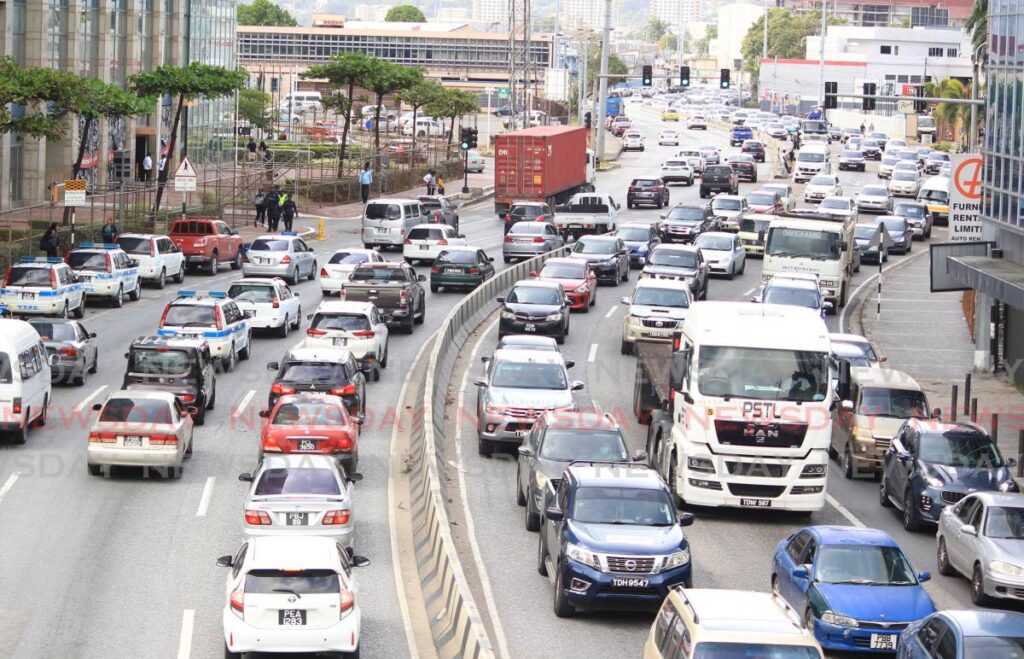The evidence: Our climate is changing

Our country shudders at the sound of heavy rainfall, dreading imminent and hours-long traffic jams in gridlock due to inundated, impassable roadways.
Our people are left stranded for hours or days without access to essentials or income, sometimes with fatal repercussions for those unable to take shelter amidst heavy wind and rain that sends galvanised roofing airborne, uproots trees and washes vehicles down flooded streets.
In the severe flooding of 2018, over 150,000 people were affected, including 75 per cent of local farmers, who suffered losses of crops, livestock, tractors and other equipment.
Beyond rainfall and floods, every year we meet new record-breaking hot temperatures.
In the past decade, TT had twice as many "hot days" (days over 34C) than in the 1990s, six times as many in the 1980s and 69 times as many as in the 1970s.
The effects of these events are countless.
Floodwater washes human pollution and litter down into our waterways and endangers our wildlife; resulting traffic jams emit toxic fumes and lower our quality of life through air pollution; heatwaves endanger the health and prosperity of our crops, which inevitably affects our food supply and security, which has downstream effects on food prices and poverty...the list goes on.
This chain of events isn’t isolated to TT.
Record-breaking temperatures are causing rapid ice melt and ocean water expansion, raising sea levels around the world, and causing imminent threats to all small island developing states (SIDS) bordered by the oceans – like TT.
Projections estimate that if the world continues on our trajectory of unabated greenhouse gas (GHG) emissions, we could be looking at average temperature increases exceeding 4C by 2100.
However, if we apply rigorous policies and regulations to reduce our emissions and achieve net zero by 2100 – temperature increases could, but are not guaranteed to – cap at 1.5C, which would mitigate the worst effects of the changing climate.

The coming temperature increases have strong relationships to expected rainfall. For every degree Celsius of temperature increase, we can expect up to ten per cent more precipitation, causing up to 40 per cent more rainfall in TT, worsening flooding, traffic jams, vehicle emissions, contributing to sickness and reducing quality of life.
Even with a temperature cap of 1.5C by 2100, some projections show a roughly one-metre sea-level rise, rendering the coastal communities of all SIDS uninhabitable owing to permanent flooding, forcing migration inwards deeper into the heart of the islands, and causing further deforestation of our already depleted tropical forests, of which TT only has approximately 40 per cent cover remaining.
Though human survival and wellbeing are so greatly intertwined with the health of our planet, we perceive our actions to be far removed from the environmental damage we cause.
For the severe impacts of climate change that we can expect by 2100 and in coming centuries, we can thank our own human activities.
The rate of oil and gas extraction to supply our demand for industrial and consumer products has never been seen before in history. Carbon from our earth is being transformed into carbon dioxide (CO2) and other GHGs as a by-product of our human activity and production.
Though GHGs play a vital role in trapping the sun’s radiation in our atmosphere and keeping our planet at a liveable temperature, the resulting carbon emissions from human activity have sent the very mechanism which allows our survival on earth out of equilibrium.
Scientists estimate that the ideal concentrations of CO2 in our atmosphere should range from 300–350 parts per million (ppm). In 2022, we were pushing on 421 ppm, and scientists warn that CO2 levels that exceed 430ppm can send our world into catastrophic environmental change. We are dangerously close.
How do we stay within that budget?
According to the UN, global emissions must be mitigated by 43 per cent by 2030 to have any chance of staying within the 1.5C temperature budget.
On a global scale, TT contributes a small fraction of GHG emissions.
However, owing to the impact of the oil and gas industry, the country has the third highest CO2 emissions per capita per year. This equates to the average person in TT emitting seven times more CO2 than the average global citizen per year.
In this context, taking action to implement domestic climate-change mitigation policies is a necessity to reduce climate-change impacts and assume responsibility for the country’s GHG emissions.
Policies and regulations in TT to make these emissions reductions a reality are already under way – as announced by the Ministry of Planning and Development – but that is just the first step.
The level of complexity of the issue of climate change, its resulting natural disasters and socio-economic impacts have deep roots that can’t be solved by mitigation in TT alone. It will take concerted effort by both the public and private sectors, along with NGOs and academic institutions, to ensure that our vulnerable islands allocate resources to adapt and build resilience to the coming dangers of climate change.
Though the average Trinidadian citizen might just see a flood after a day of rain, perhaps now you can see the interconnected nature of these floods in the way we were taught to live our lives, rooted in our actions – making these natural disasters increasingly less “natural” and increasingly more man-made.
The TT Chamber of Industry and Commerce thanks Sara Low, sustainability consultant, EY, for contributing this article.
EY is a member of the TT Chamber


Comments
"The evidence: Our climate is changing"